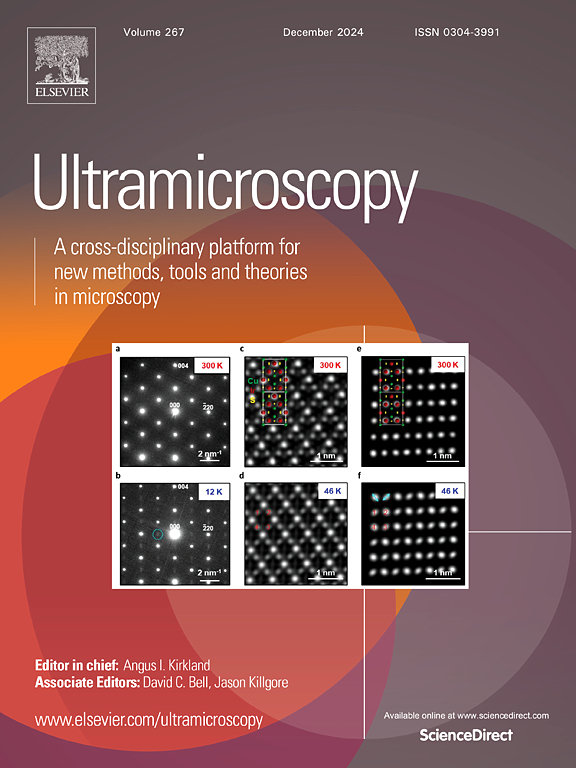Evaluating atomic counts in metal nanoclusters via scanning transmission electron microscopy
IF 2
3区 工程技术
Q2 MICROSCOPY
引用次数: 0
Abstract
Nanoscale metal atom aggregates, metal nanoclusters (NCs), exhibit unique electronic properties that strongly depend on the number of constituent atoms. Precise control over atomic composition is highly anticipated to advance NC-based materials science, particularly for fine-tuning photonic responses, catalytic reactivity, and electronic spin characteristics. In this study, we employed high-angle annular dark-field scanning transmission electron microscopy (HAADF-STEM) to observe platinum (Pt) NCs immobilized on a substrate, enabling direct visualization of their deposition states, densities, and structures. The Pt NCs, containing 19 to 70 atoms with single-atom precision, were deposited onto TEM grids. By analysing STEM images, structural information indicative of a spherical shape was revealed, demonstrating a clear correlation between the number of atoms in Pt NCs and their observed diameters in the STEM, comparable to mass spectrometry assessments. This approach highlights estimation of the number of constituent atoms in metal NCs based on diameter distributions observed by STEM, providing valuable insight for size-dependent structural analysis and the exploration of their functionalized metal NCs.
用扫描透射电子显微镜评价金属纳米团簇中的原子计数。
纳米级金属原子聚集体,即金属纳米团簇(NCs),表现出独特的电子特性,这种特性强烈依赖于组成原子的数量。对原子组成的精确控制被寄予了很高的期望,以推进基于nc的材料科学,特别是对光子响应、催化反应性和电子自旋特性的微调。在这项研究中,我们使用高角度环形暗场扫描透射电子显微镜(HAADF-STEM)观察固定在衬底上的铂(Pt) nc,从而直接可视化其沉积状态、密度和结构。将含有19 ~ 70个原子的Pt纳米碳化物以单原子精度沉积在TEM网格上。通过分析STEM图像,揭示了指示球形的结构信息,表明Pt NCs中的原子数与其在STEM中观察到的直径之间存在明确的相关性,可与质谱评估相媲美。这种方法强调了基于STEM观察到的直径分布对金属nc中组成原子数量的估计,为尺寸依赖性结构分析和探索其功能化金属nc提供了有价值的见解。
本文章由计算机程序翻译,如有差异,请以英文原文为准。
求助全文
约1分钟内获得全文
求助全文
来源期刊

Ultramicroscopy
工程技术-显微镜技术
CiteScore
4.60
自引率
13.60%
发文量
117
审稿时长
5.3 months
期刊介绍:
Ultramicroscopy is an established journal that provides a forum for the publication of original research papers, invited reviews and rapid communications. The scope of Ultramicroscopy is to describe advances in instrumentation, methods and theory related to all modes of microscopical imaging, diffraction and spectroscopy in the life and physical sciences.
 求助内容:
求助内容: 应助结果提醒方式:
应助结果提醒方式:


